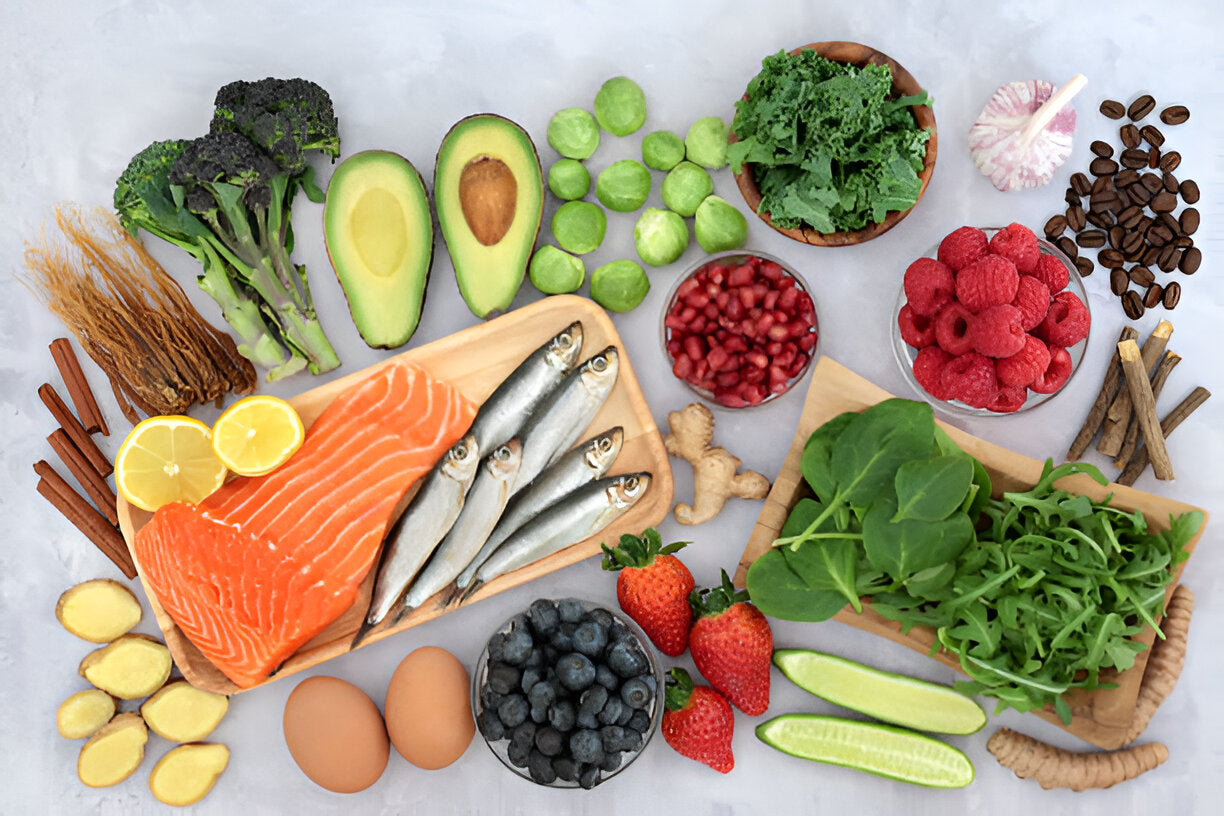The world of plant-based nutrition has gained significant attention in recent years, not just for its environmental and ethical benefits, but also for its profound impact on human health. At the heart of this nutritional revolution are phytonutrients - powerful plant compounds that offer a wide array of health benefits. This article explores the healing properties of various plant compounds and how incorporating a diverse range of colorful fruits and vegetables can support health and prevent disease.
Understanding Phytonutrients

Phytonutrients, also known as phytochemicals, are bioactive compounds found in plants that contribute to their color, taste, and smell. While not essential for keeping us alive (unlike vitamins and minerals), phytonutrients have been shown to play a crucial role in promoting optimal health and preventing various diseases.
Key Categories of Phytonutrients
1. Carotenoids
Carotenoids are responsible for the yellow, orange, and red colors in many fruits and vegetables.
Benefits:
- Support eye health
- Boost immune function
- May reduce the risk of certain cancers
Sources: Carrots, sweet potatoes, tomatoes, pumpkin
2. Flavonoids
Flavonoids are a diverse group of phytonutrients found in almost all fruits and vegetables.
Benefits:
- Powerful antioxidants
- Anti-inflammatory properties
- May improve heart health
Sources: Berries, citrus fruits, onions, green tea
3. Glucosinolates
These compounds are found primarily in cruciferous vegetables.
Benefits:
- May have anti-cancer properties
- Support liver function
- Boost detoxification processes
Sources: Broccoli, Brussels sprouts, cabbage, kale
4. Resveratrol
Resveratrol is a type of polyphenol found in certain plants.
Benefits:
- May have anti-aging properties
- Supports heart health
- Potential neuroprotective effects
Sources: Grapes, blueberries, cranberries, peanuts
5. Ellagic Acid
This polyphenol is found in various berries and nuts.
Benefits:
- Powerful antioxidant
- May have anti-cancer properties
- Supports liver health
Sources: Strawberries, raspberries, pomegranates, walnuts
The Rainbow of Plant-Based Healing
One of the best ways to ensure you're getting a wide variety of phytonutrients is to "eat the rainbow." Different colors in fruits and vegetables indicate different phytonutrients, each with unique health benefits.
Red: Lycopene and Anthocyanins
- Found in: Tomatoes, watermelon, red peppers, strawberries
- Benefits: Heart health, prostate health, reduced cancer risk
Orange/Yellow: Beta-carotene and Flavonoids
- Found in: Carrots, sweet potatoes, pumpkin, oranges
- Benefits: Eye health, immune function, skin health
Green: Chlorophyll, Isoflavones, and Indoles
- Found in: Spinach, kale, broccoli, green tea
- Benefits: Detoxification, cancer prevention, bone health
Blue/Purple: Anthocyanins and Resveratrol
- Found in: Blueberries, blackberries, eggplant, purple grapes
- Benefits: Cognitive function, heart health, anti-aging
White: Allicin and Quercetin
- Found in: Garlic, onions, cauliflower, mushrooms
- Benefits: Immune support, heart health, anti-inflammatory properties
Harnessing Phytonutrients for Disease Prevention

1. Cancer Prevention
Many phytonutrients have shown potential in reducing cancer risk:
- Lycopene in tomatoes may reduce prostate cancer risk
- Sulforaphane in broccoli has been linked to reduced breast cancer risk
- Ellagic acid in berries may help prevent various types of cancer
2. Heart Health
Phytonutrients support cardiovascular health in various ways:
- Flavonoids in berries and cocoa may improve blood pressure
- Resveratrol in grapes supports heart function
- Allicin in garlic may help lower cholesterol
3. Brain Health
Several phytonutrients have neuroprotective properties:
- Anthocyanins in blueberries may improve cognitive function
- Curcumin in turmeric has potential in preventing neurodegenerative diseases
- Omega-3 fatty acids in walnuts support brain health
4. Immune Support
Many plant compounds boost immune function:
- Vitamin C in citrus fruits enhances immune cell function
- Beta-carotene in orange vegetables supports immune response
- Quercetin in onions and apples has antiviral properties
5. Anti-Inflammatory Effects
Chronic inflammation is linked to various diseases, and many phytonutrients have anti-inflammatory properties:
- Ginger contains gingerols that reduce inflammation
- Omega-3 fatty acids in flaxseeds have potent anti-inflammatory effects
- Anthocyanins in cherries may reduce inflammation and pain
Incorporating Phytonutrients into Your Diet
- Diversify Your Plate: Aim to include fruits and vegetables of all colors in your meals.
- Choose Whole Foods: Opt for whole fruits and vegetables over juices to ensure you're getting the full spectrum of nutrients, including fiber.
- Experiment with Herbs and Spices: Many herbs and spices are rich in phytonutrients. Try adding turmeric, ginger, or oregano to your dishes.
- Consider Cooking Methods: Some cooking methods can enhance the bioavailability of certain phytonutrients. For example, cooking tomatoes increases the availability of lycopene.
- Pair Smart: Some phytonutrients are better absorbed when consumed with healthy fats. Try adding avocado to your salad or using olive oil in your cooking.
- Snack on Nuts and Seeds: These are rich in various phytonutrients and healthy fats.
- Drink Green Tea: It's a rich source of catechins, a type of flavonoid with potent antioxidant properties.
Conclusion
The power of phytonutrients in promoting health and preventing disease is a testament to the healing potential of a plant-based diet. By incorporating a wide variety of colorful fruits, vegetables, herbs, and spices into our daily meals, we can harness these powerful compounds to support our overall health and well-being. Remember, the key to maximizing the benefits of phytonutrients lies in diversity - the more colors and varieties of plant foods you consume, the broader the spectrum of health benefits you're likely to receive. As research in this field continues to evolve, the importance of these plant compounds in our diet becomes increasingly clear, offering a natural and delicious path to better health and disease prevention.




